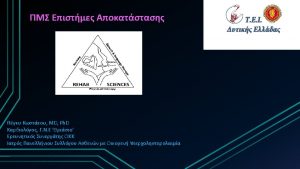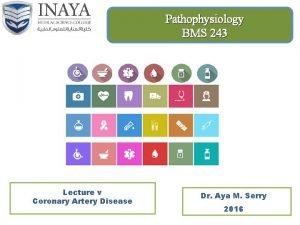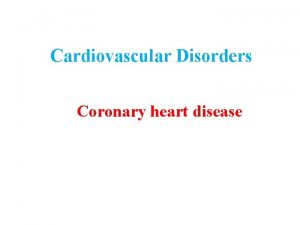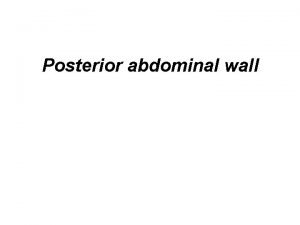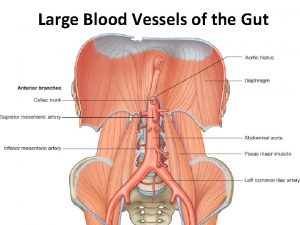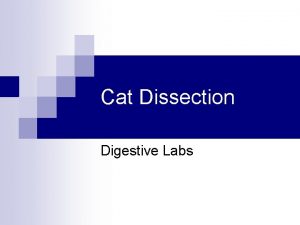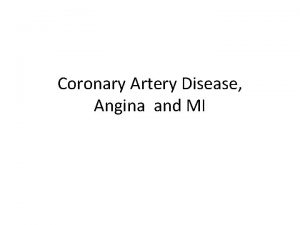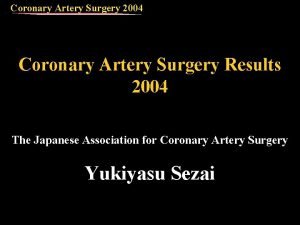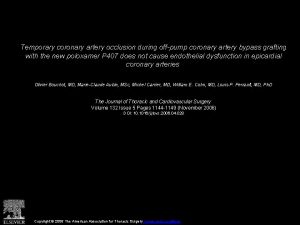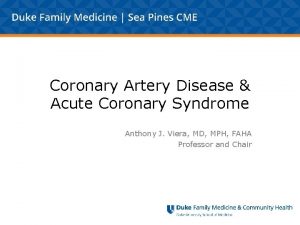Physiological Assessment of Left Main Coronary Artery Disease









- Slides: 9

Physiological Assessment of Left Main Coronary Artery Disease Bhavik Modi*, Tim van de Hoef#, Jan Piek# and Divaka Perera*. Euro. Intervention. June 2017. doi: 10. 4244/EIJ-D-1700135. * St Thomas’ Hospital Campus, King’s College London # AMC Amsterdam, Netherlands

WHY LEFT MAIN? • LMCA disease found in 5 -8% of angiograms • LMCA supplies on average 75% of myocardium • LMCA medically managed (CASS registry 70’s) = 50% mortality at 3 years! • LMCA revascularization is an area of ongoing diagnostic and strategy dilemma – NOBLE / EXCEL

EVIDENCE? Evidence Supporting Physiology-guided management in the Catheter Laboratory has been growing. You will all know: • DEFER, FAME 2 • RIPCORD • DEFINE-FLAIR But did you know: - None include LMCA - Original validation study of FFR vs basket of non-invasive tests included only 2 patients with LMCA disease This is despite LMCA misclassification of upto 50% using angiography alone

51 consecutive intermediate LMS lesions (40 -80%) 4 interventiona l cardiologists Independently graded as Significant, Not Significant or Unsure Lindstaedt et al 2007 1. 00 0. 90 0. 80 0. 70 0. 60 0. 50 not significan t unsure 1. 00 0. 90 0. 80 0. 70 0. 60 0. 50 not significant significan t unsure

OBSERVATIONAL DATA

OBSERVATIONAL DATA Is the LMCA consequence of plaque rupture greater different? larger proportion of myocardium subtended Does measuring into LAD vs Cx differ (Yes if downstream resistance to flow)

CHALLENGES? ØTechnical considerations • Pressure damping, need to disengage guide • Achieving adequate hyperemia only possible with IV adenosine ØSerial Disease • Downstream non-contiguous disease in both branches (LAD and LCx) • Disease non-contiguous disease in only one branch. In this case safe to use disease- free side-branch to isolate ‘true’ significance of proximal lesion, especially if LM FFR measured when diseased branch doesn’t have FFR<0. 45

Measure FFR towards both LAD and LCx + w + F R > 0. 80 LAD -OR LCx FFR SFFR 0. 80 Disoordant LAD AND LCx FFR S 0. 80 result LMCA not significant ' LAD LCX OMT CABG or PCI Be guided by FFR w llback troce Pa t ie nt s for PCI: Perf orm FFR p u llback, treat largest step up, repeat pullback unt il FFR > 0. 80. If pullback equiv al ent, be guided by IVUS of LMCA, using MLA 5 6. 0 as cut -off ING'S K Colle LONDON ge University of

CONCLUSIONS • Considerable evidence base supporting physiology-guided revascularization largely excludes LMCA but with some promising observational data • Challenges exist – technical and serial disease • Using disease-free side-branch to isolate ‘true’ significance is a viable option • We propose an algorithm involving pressure wire pullback from both LAD and LCx when you encounter LMCA disease. Treat biggest step-up and remeasure • Randomized trial data needed
 Coronary artery disease
Coronary artery disease Coronary artery disease pathophysiology
Coronary artery disease pathophysiology Course of right coronary artery
Course of right coronary artery Function of coronary artery
Function of coronary artery Coronary heart disease
Coronary heart disease Origin of superior mesenteric artery
Origin of superior mesenteric artery Abdominal aorta branches vertebral level
Abdominal aorta branches vertebral level Superior rectal artery is a branch of
Superior rectal artery is a branch of Brachiocephalic vein
Brachiocephalic vein Urogenital system of the cat
Urogenital system of the cat
